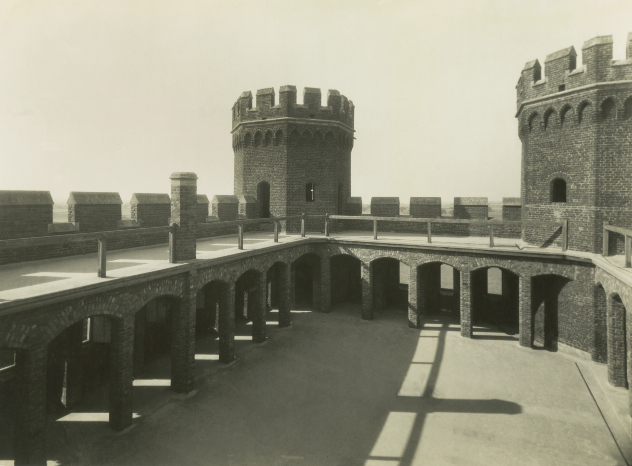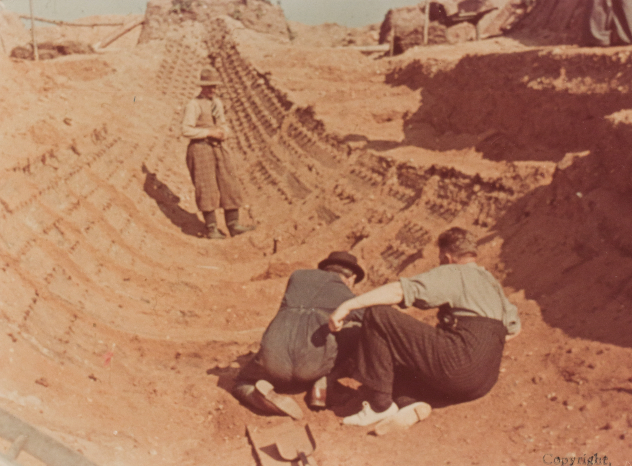Landscapes, monuments, artefacts
The National Trust looks after over 90,000 archaeological sites (including parts of eleven World Heritage Sites), over 1,700 scheduled monuments and thousands of objects made by past people. Taken together, they represent an unrivalled national collection, encompassing one million years of human history and endeavour.
From the footprints of prehistoric ancestors preserved in the shifting sands at Formby, Merseyside and the spectacular mosaics of Chedworth Roman Villa in Gloucestershire, to the remains of the Norwegian Barque Helvetia which wrecked off the Gower peninsula in Wales in 1887, archaeological sites and collections in our care tell stories of how our ancestors shaped, responded and related to the world around them.
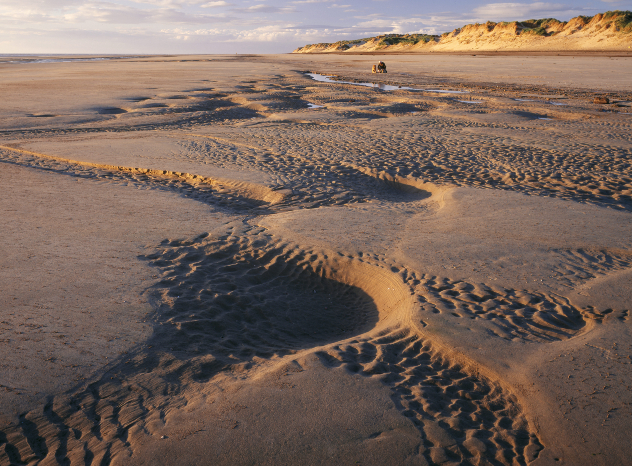
Prehistoric footprints preserved in the Holocene sediment at Formby, Merseyside
© National Trust Images/Joe Cornish
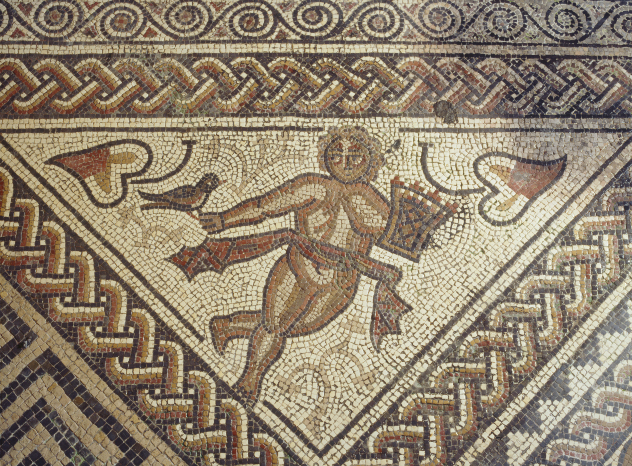
Floor mosaic showing the figure of Spring at Chedworth Roman Villa, Gloucestershire
© National Trust Images/Ian Shaw
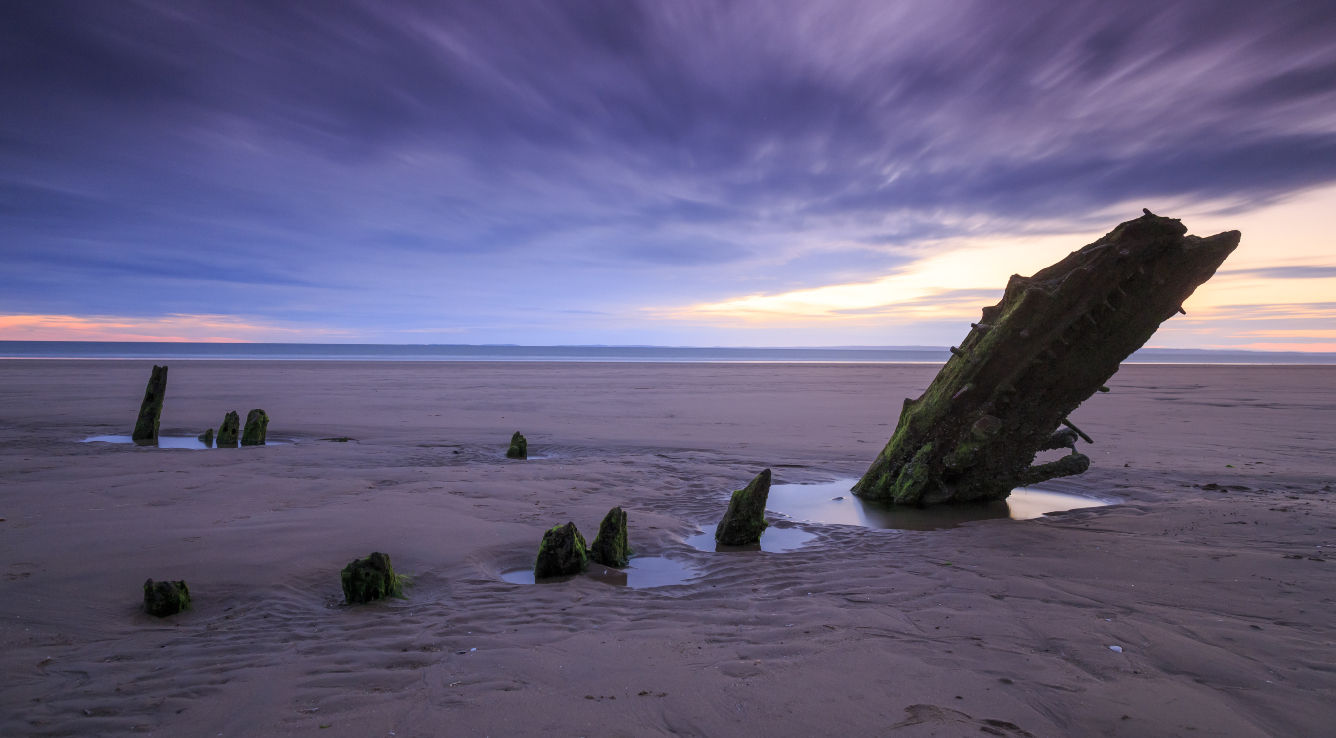
The ocean-stripped oak carcass of the Helvetia shipwreck, Rhossili Bay, Gower, Wales
© National Trust Images/John Miller
Stone circles
Perhaps the most recognisable of prehistoric monuments, stone circles may also be the most enigmatic. The precise function of these circles is not known. They may have been designed as calendars to mark key moments in the annual cycle of seasons, or they may have been places to meet for ceremonies and celebrations or to remember ancestors.
The incredible complex at Avebury in Wiltshire is the largest stone circle in the world. Within the enormous henge (the circular bank and ditch enclosure within which the stones sit) there are actually three stone circles, the largest of which originally contained nearly 100 stones.
Equally impressive, the stone circle at Castlerigg in the Lake District consists of 38 standing stones standing up to three metres tall. By the 19th century, the site was so popular with visitors that people started to chip pieces off the stones as souvenirs. It was one of the first ancient sites to be bought and given to the National Trust for protection.
There are other, less assuming examples like the stone circle at Dyffryn Mymbyr in Snowdonia National Park where the circle (14 metres in diameter), is comprised of stones averaging just half a metre tall.
Stones were not only arranged in circles. The double stone row at Trowlesworthy on Dartmoor in Devon extends for over 120 metres, with over 100 stones still standing. There are single standing stones like the megalith at Cushendun in County Antrim, Northern Ireland, which now forms part of a small flowerbed at the entrance to a caravan park. Each site offers a tantalising glimpse into the beliefs, traditions and ingenuity of our ancestors.
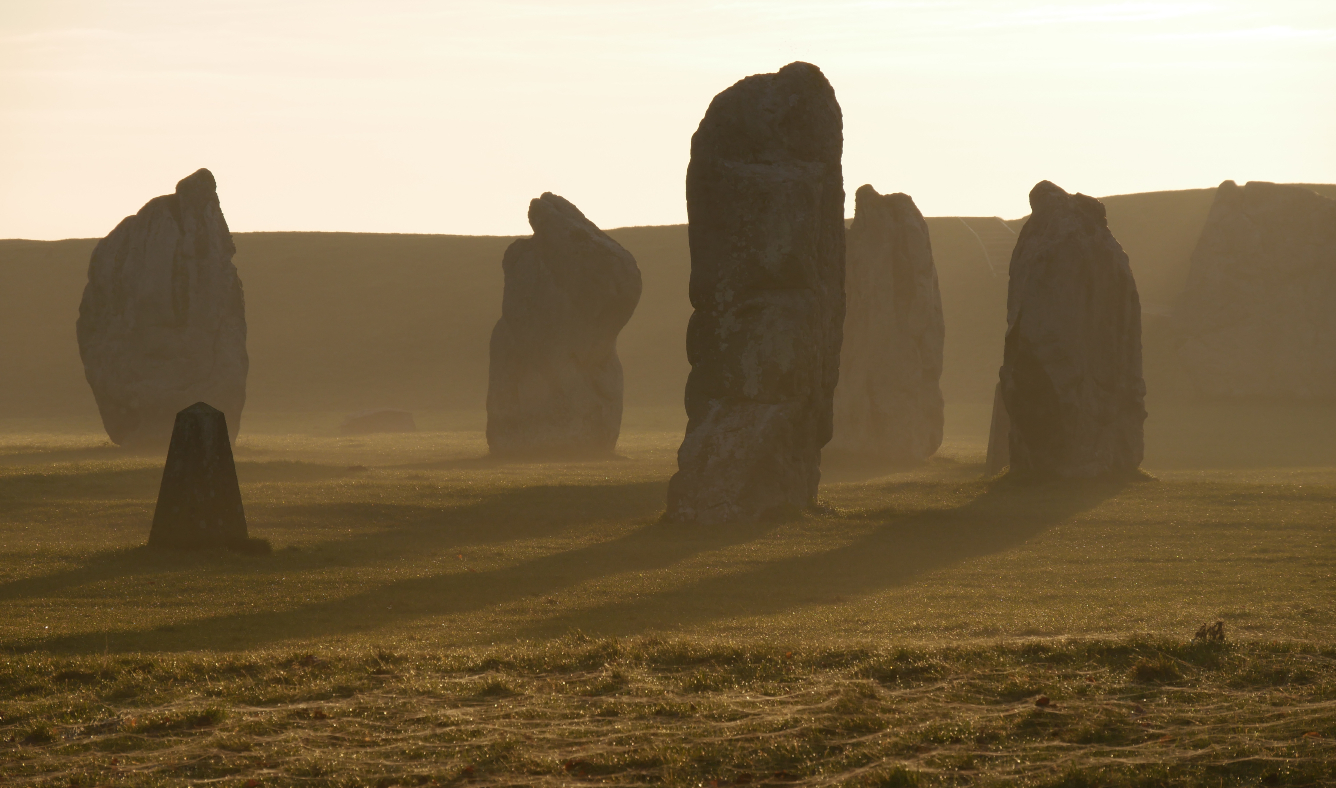
Avebury Circle, Wiltshire
© National Trust Images/Emma Weston
Barrows
Barrows are earth mounds where people buried their dead and there are more than 1,000 recorded examples on National Trust land. Many date to the Bronze Age, although they also range from the long barrow near Normanton Gorse in the Stonehenge Landscape dating to the Neolithic period, to the royal cemetery at Sutton Hoo from the early medieval period.
These monuments help us think about life and death in prehistory and how prehistoric communities were organised. Sometimes, they offer direct connections to individuals. A barrow on Overton Hill, one of many at Avebury, was excavated in the 19th century, revealing the crouched skeleton of an elderly female, the skeleton of a child, aged 2-3 years, as well as urns and a perforated head of a bone pin.
In upland landscapes, barrows were deliberately sited to act as conspicuous markers, perhaps denoting territorial boundaries. A barrow in Upper Hey, Howden South in the Peak District is positioned on the neck of a ridge crest, making it highly visible from surrounding hills and offering extensive views across the landscape from the site itself.
The round barrow is the most common form, consisting of a circular mound of earth covering one or more burials. The bell barrow is a variation of this, such as the bell barrow on Brook Down on the Isle of Wight. At five metres high, it is part of a cluster of barrows which, like so many of these prominent mounds, were subject to antiquarian excavations during the 19th century.
There are also examples of rare disc barrows – a bank and ditch surrounding a flat circular platform, with one or more small burial mounds within. The ‘Shooters Hut’ disc barrow on the Long Mynd is the only example of a disc barrow in Shropshire; it is all the more unusual in that it was partly excavated in the 19th century for the construction of a grouse-shooting hut.
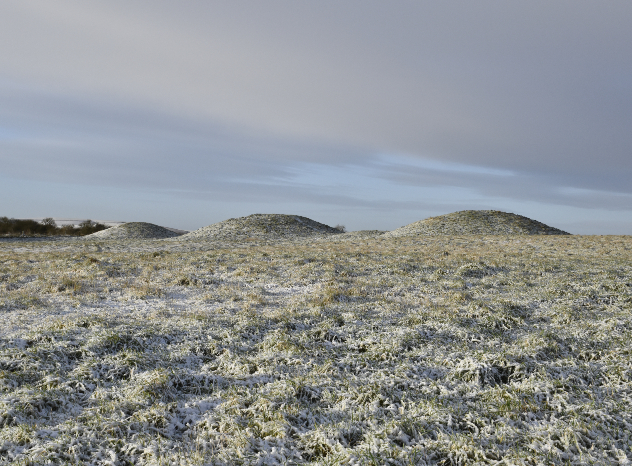
Seven Barrows on Overton Hill at Avebury, Wiltshire
© National Trust Images/Abby George
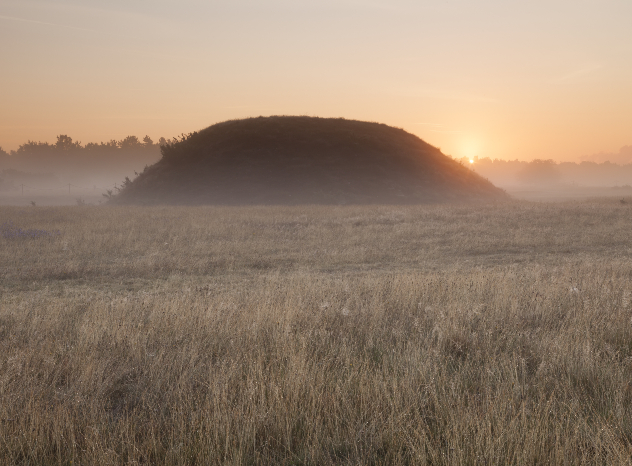
Burial mounds at Sutton Hoo, Suffolk
© National Trust Images/Justin Minns
Iron age hillforts
Hillforts are arguably the cathedrals of the countryside. The hillfort at Mam Tor in the Peak District is one of the highest in Britain at over 500 metres above sea level. Despite their commanding positions and their impressive ramparts, these sites are now understood less as fortresses and more as places of settlement and trade, and as administrative centres where produce was stored and people gathered.
Some of the most spectacular hillforts are in Dorset, including Hambledon Hill, a key settlement of the Durotriges tribe. The sinuous ramparts enclose traces of 365 roundhouse platforms. This was the site of the last known battle on a hillfort, between the Dorset Clubman and the army of Oliver Cromwell in 1645. Nearby, Hod Hill is the only hillfort known to have been reoccupied as a Roman fort. At Devil’s Dyke (where, according to legend, the Devil attempted to wipe out Christianity by digging through the South Downs and flooding the Weald) the impressive hillfort later became home to a Victorian amusement park, a tavern and an aerial railway.
As well as having great archaeological and historical significance, hillforts are also important ecological habitats, with environmental changes posing risks. At Dinas Dinlle on the north-west coast of Wales, climate change has accelerated coastal erosion. Much of the monument has now been lost, with investigations seeking to record and recover the archaeology before it disappears.
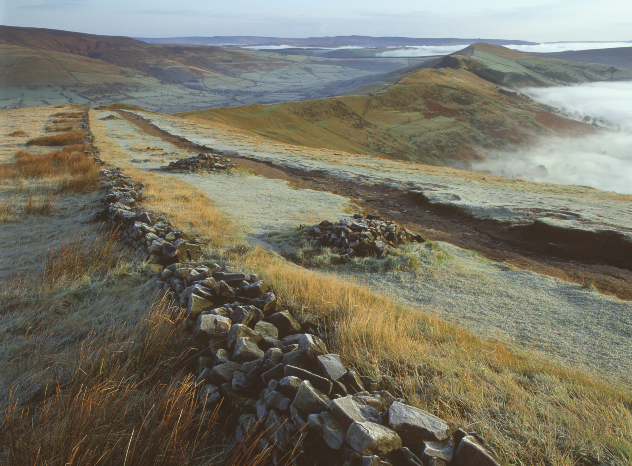
View from Mam Tor in the Peak District, Derbyshire
© National Trust Images/Joe Cornish
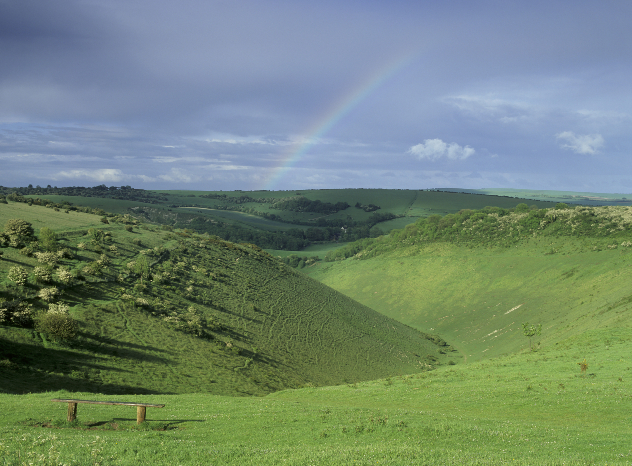
A view across Devil's Dyke, Sussex
© National Trust Images/David Sellman
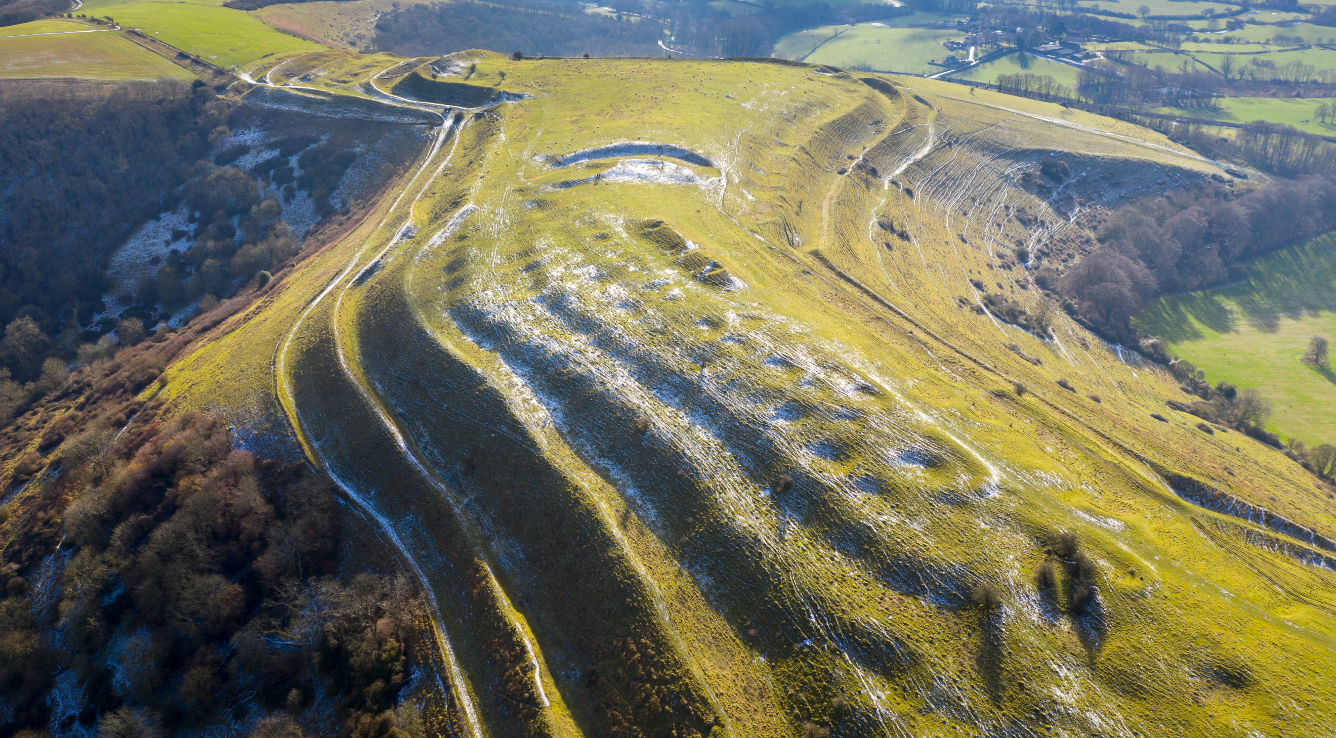
Aerial view of Hambledon Hill, Dorset
© National Trust Images/John Miller
Castle ruins
The National Trust also looks after many ruined castles, built from the time of the Norman invasion onwards, as well as six miles of Hadrian's Wall, including Housesteads Roman Fort.
Some of the earliest post-Conquest castle sites survive only as earthworks. At Fulking the earthworks of the bailey (the outer enclosure) and the motte (the mound upon which would have stood the castle keep) can be clearly seen in their commanding position on the escarpment of the South Downs. The base of a tower at the summit of Dinas Emrys in north-west Wales, thought to date from the 12th century, marks one of the earliest stone castles of the Princes of Gwynedd. It is here, according to legend, that King Vortigern built his castle after the red and the white dragon were released from the mountain and fought until the white dragon fled.
More substantial remains can be seen at sites like Corfe Castle which was particularly developed during the 12th and 13th centuries. The sprawling remains of the castle complex, sitting atop a steep chalk hill, dominate the surrounding landscape. The ruinous state of the fortress, which served as a Royalist stronghold during the Civil War, is in large part attributable to the Parliamentarians who systematically undermined the walls and towers after the castle was betrayed during a siege in 1646.
Bodiam Castle in East Sussex, built by Sir Edward Dallingridge, is an exceptional survival, both as a work of architecture and for its medieval setting. This 14th-century construction, with its four drum towers rising above the moat, may be a case of style over substance, and was arguably built more to impress than repel.
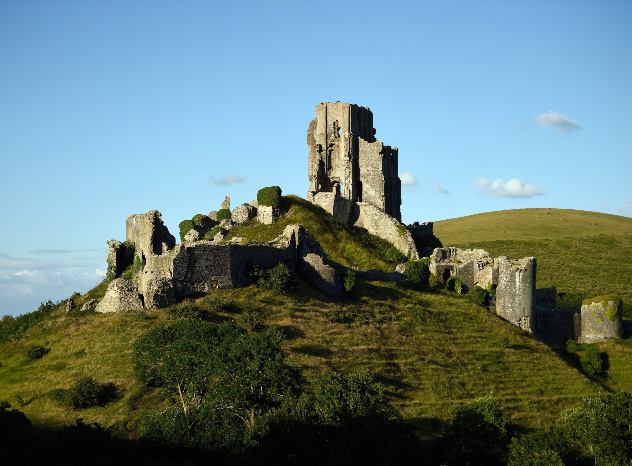
The medieval ruins of Corfe Castle, Dorset
© National Trust Images/John Millar
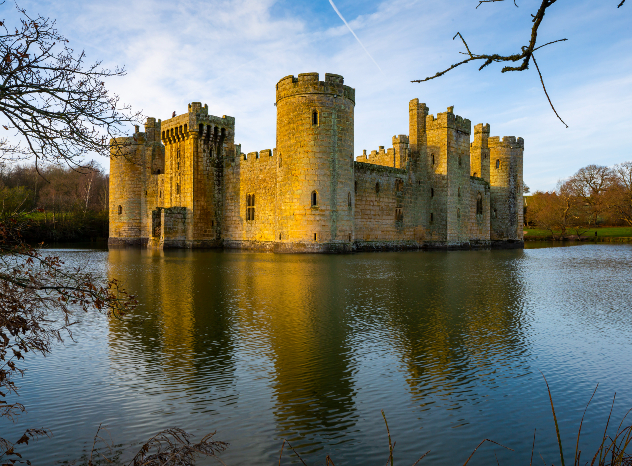
Bodiam Castle, East Sussex
© National Trust Images/Chris Lacey
Stone artefacts
Stone objects are often the only materials to survive from the period before metalworking. Stone tools and weapons range from the highly functional, to the ornamental and symbolic.
During the 19th and early 20th centuries, a market for ancient stone tools emerged, which is how some entered the collections of the National Trust. At Calke Abbey, Derbyshire, there are stone tools found in the Peak District, axe-heads from County Antrim, Northern Ireland and barbed and tanged arrowheads. 17 stone axe-heads were bequeathed to the National Trust by the 1st Lord Fairhaven (1896-1966) with the house and the rest of the contents at Anglesey Abbey, Cambridgeshire.
In some cases, prehistoric stone artefacts have been reunited with the places where they were found, as with the collection of 200 mostly stone tools found around Saddlescombe, West Sussex during the Victorian era. The collection (on loan from Royal Pavilion & Museums, Brighton & Hove) is on display at Saddlescombe Farm where it is used as an educational resource.
More recent discoveries help us understand how far back human activity occurred at National Trust places, including a 6,000-year-old flaked axe-head recovered during building work in Slindon, West Sussex.
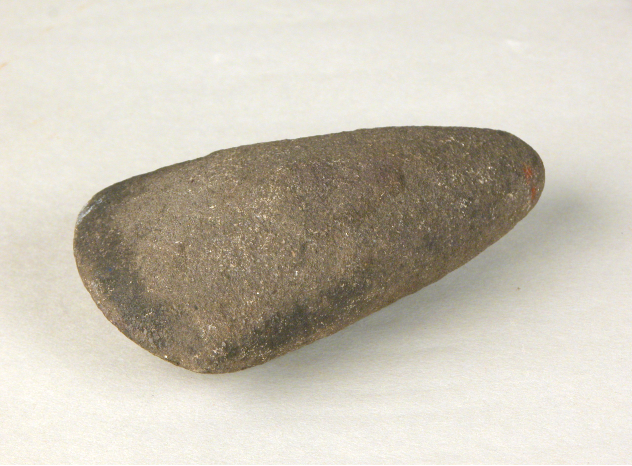
Stone axe-head collected from the Peak District in the collection at Calke Abbey, Derbyshire
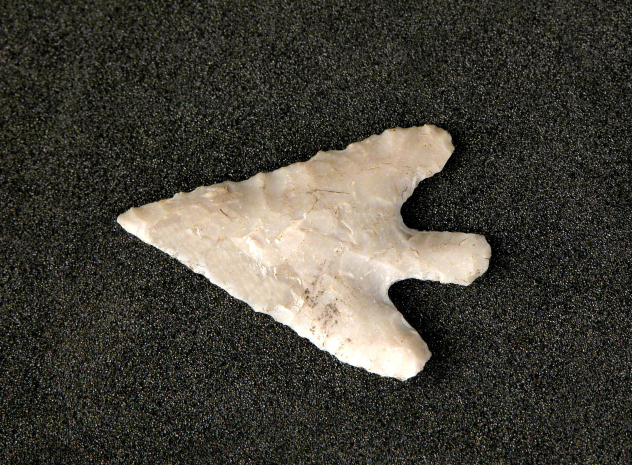
Barbed and tanged arrowhead in the collection at Calke Abbey, Derbyshire
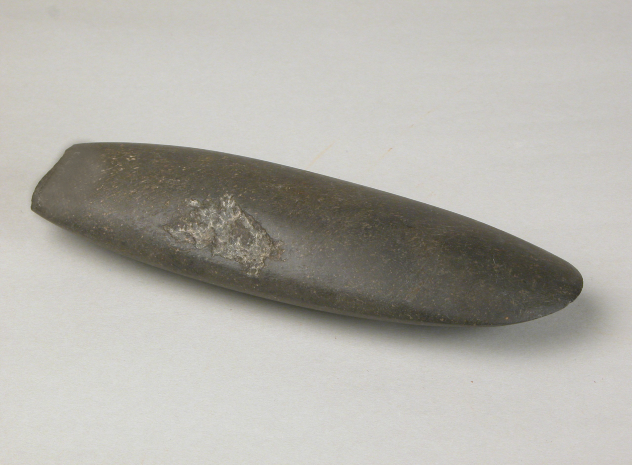
Polished stone axe-head found in County Antrim, Northern Ireland in the collection at Calke Abbey, Derbyshire
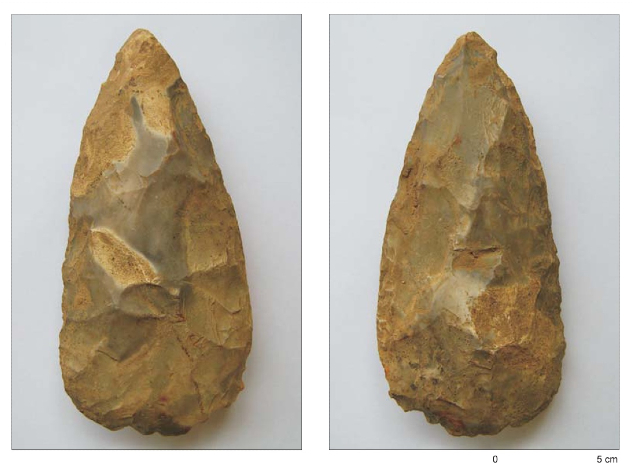
Neolithic flaked axe-head recovered during building work at Slindon, West Sussex
Designed landscapes
The National Trust cares for an astonishing collection of designed landscapes – places which have been designed and laid out specifically for ornamental or recreational purposes. These are predominantly landscapes from the 18th century onwards such as those by Lancelot ‘Capability’ Brown (Stowe, Buckinghamshire; Croome, Worcestershire) and Humphry Repton (Sheringham Park, Norfolk; Uppark, Sussex). They also include World Heritage Sites, like Studley Royal with its spectacular water gardens.

The river and landscape created by Capability Brown at Croome Park, Worcestershire
© National Trust Images/David Noton
These landscapes have often changed over time, and our knowledge of them continues to grow through archaeological research. The remains of a previously unknown summer house and plunge pool at Attingham Park, Shropshire were unearthed during archaeological evaluation. Meanwhile the location, size and shape of The Temple of Sleep at Stowe, Buckinghamshire – a garden temple probably designed by Sir John Vanbrugh, built around 1724 and demolished in the 1760s – were established by excavation in 2007.
Some landscapes have much earlier origins. Medieval parks, built especially for the hunting and housing of deer, were established across England, Scotland and Wales following the Norman invasion of 1066. Dunham Massey, Knole and Lyme were all imparked and stocked with deer from the 14th century onwards. Some medieval deer parks have not survived; excavation has identified the hunting lodge of the Earls of Arundel within agricultural fields at Downley on the Drovers Estate in West Sussex.
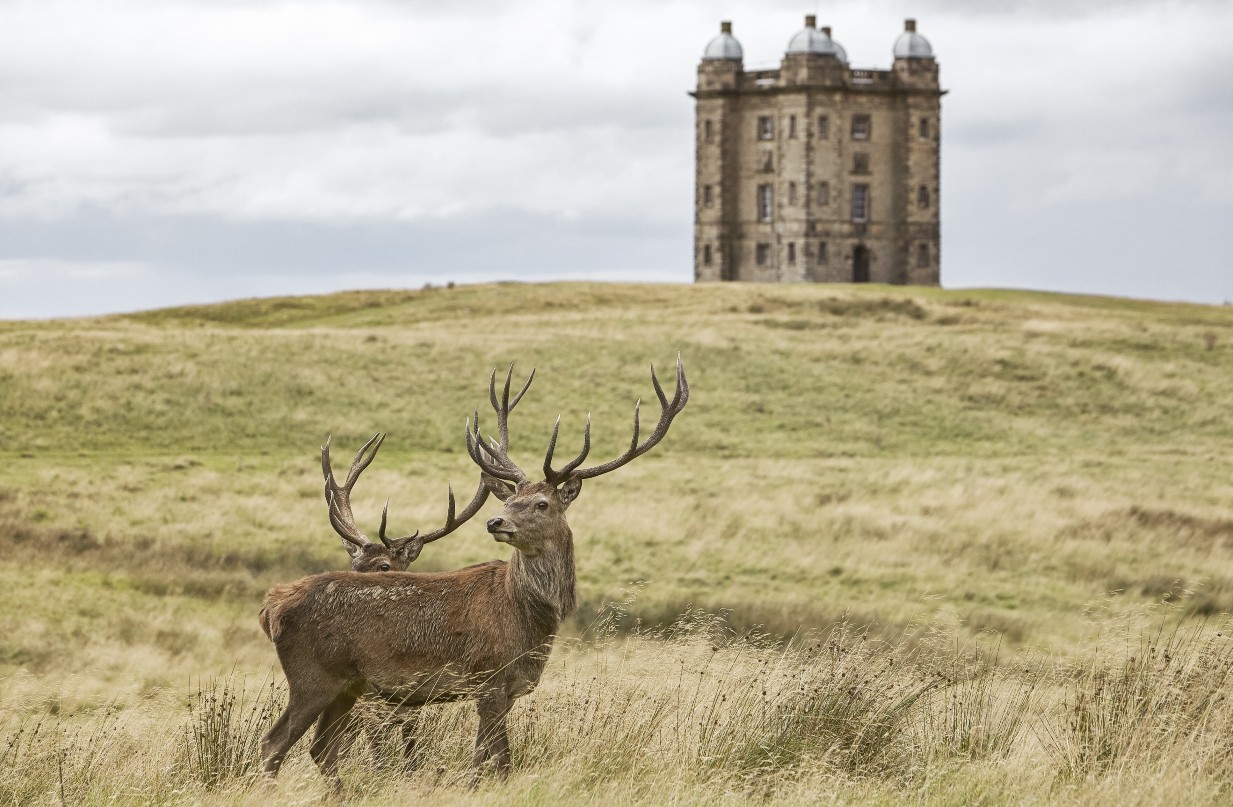
The medieval deer park at Lyme Park, Cheshire, with The Cage, an Elizabethan hunting tower in the distance
© National Trust Images/Arnhel de Serra
Industrial heritage
The National Trust also cares for a huge range of places which speak to a history of soot and smoke, of grinding gears and calloused hands. Evidence of industry can be read across many of our landscapes. Sometimes it is ancient, like evidence for Roman salt production on the Purbeck coast. More often it relates to an intensive exploitation of resources from the medieval period onwards.
Archaeological records include hundreds of saw pits, often now visible only as slight rectangular hollows having been filled with silt and sawdust, as well as thousands of charcoal-burning platforms or ‘stances’ – circular levelled areas where stacks of timber smouldered to create a fuel that could burn at a much greater intensity than wood.
There are structural remains too, including dozens of brick kilns, like those being gradually eroded by the waves at Brownsea Island, and lime kilns, such as those at Lindisfarne, which are among the largest in the country.
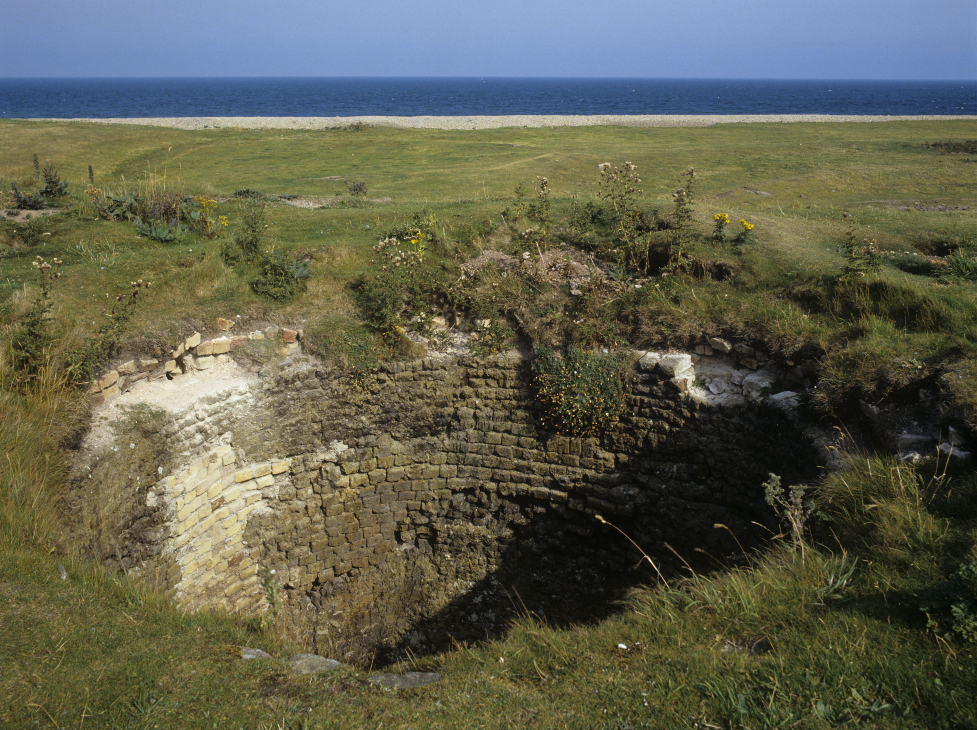
A brick-lined circular lime kiln at Lindisfarne Castle, Northumberland
© National Trust Images/Charlie Waite
Harnessing the power and potential of water has often been key to industrial processes. There are survivals like Houghton Mill on the Great Ouse and Park Mill at Bateman's, and many more relics and ruins, like the remains of mills at Corfe Castle and Plas yn Rhiw, with their associated water channels, leats and races.
The 16th-century ‘hammer' pond at Nymans, West Sussex is an example of a historic artificial pond. Here, a dam (60-metres long, 3-metres tall) across the valley held back sufficient water to drive a waterwheel which powered the ‘Blackfold Furnace’ turning ore into iron.
There is additional evidence underground. Our mining heritage extends from the earliest metal-mining site in England at Alderley Edge, Cheshire to the Roman gold mine at Dolaucothi in south-west Wales, and the Levant mine (which only ceased operating in 1930) in the Cornish Mining World Heritage Site, with its magnificent steam-powered beam pump.
Military archaeology
The National Trust looks after many thousands of years of military remains, the majority relating to the global conflicts of the 20th century.
During the First World War, military training camps emerged. By 1918, 50,000 troops had passed through the camp at Witley and Milford Commons, known as ‘Tin Town’, including, for a brief period, the poet Wilfred Owen (1893–1918). The layout and remains of the camp can still be made out as subtle archaeological earthworks in some places.
With the threat of German invasion during the Second World War, the first lines of defence were on the coast. Pillboxes, tank traps and emergency airfields are found along the National Trust’s 750 miles of coast. Much of the surface evidence for these installations was removed after the war. However, since 2012 excavations at Fan Bay, Dover have exposed a vast network of tunnels associated with an artillery battery above.
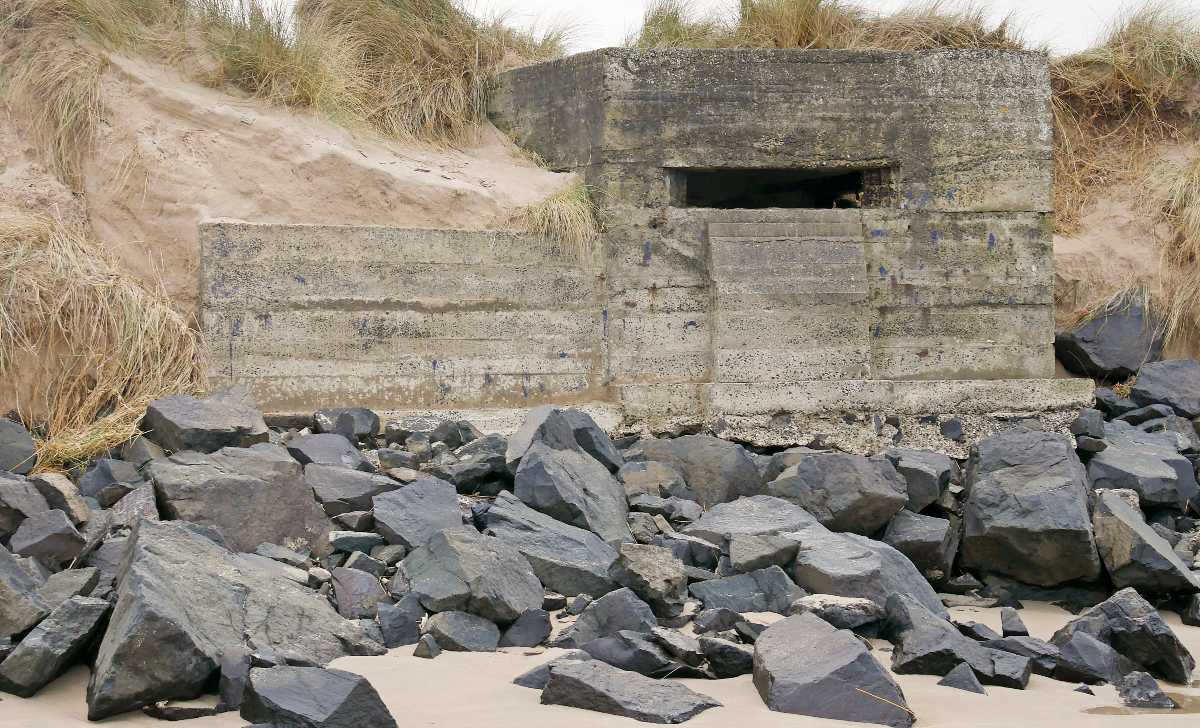
A previously buried WWII pillbox at Portstewart Strand, Co Londonderry, NI
© National Trust Images/Wilbert McIlmoyle
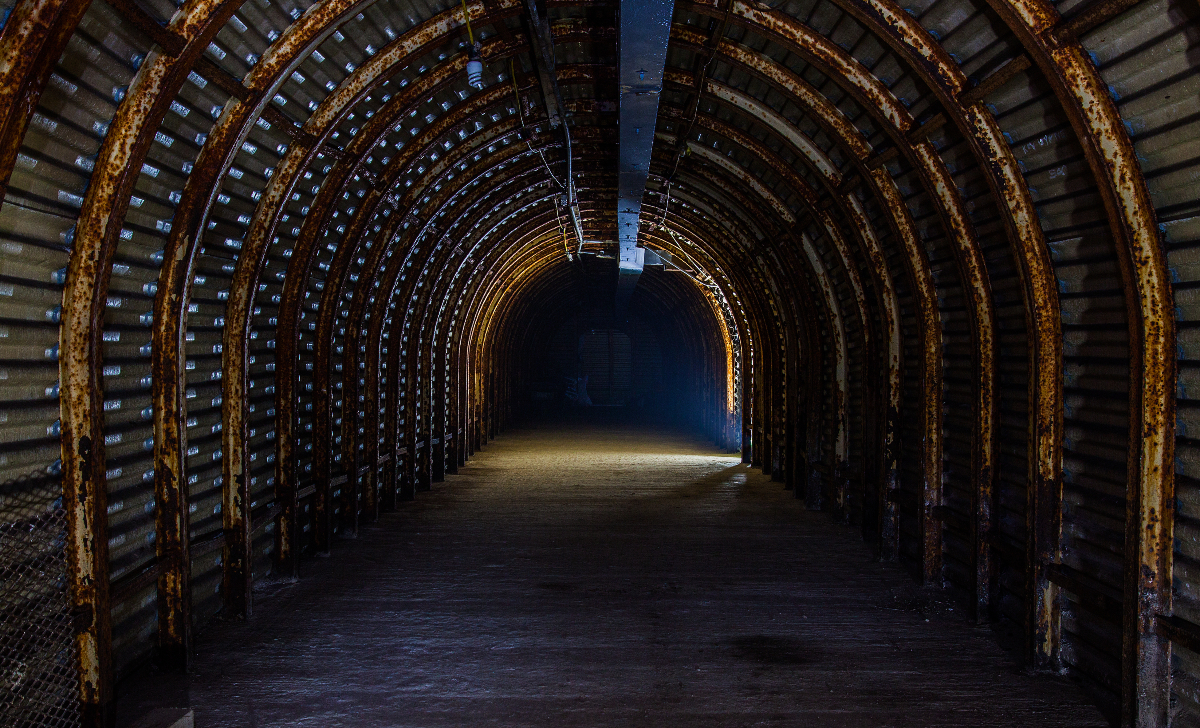
One of the tunnels at Fan Bay Deep Shelter, White Cliffs of Dover, Kent
© National Trust Images/Chris Tapley
Many of the National Trust’s parks became military camps, with remains of concrete paths and brick Nissen hut bases still evident at places like Petworth Park and Hardwick Hall Estate. Studland Beach served as a training area for troops before D-Day, where Eisenhower, Churchill, Montgomery and George V looked on from the concrete casing of the observation bunker ‘Fort Henry’.
Some places have secretive pasts. From 1913, Orford Ness was a site for the covert development of new weapons, from early military aviation to atomic bombs. The landscape here is littered with archaeological remains from vast abandoned research laboratories to unassuming lumps of concrete which represent the birth of radar technology.
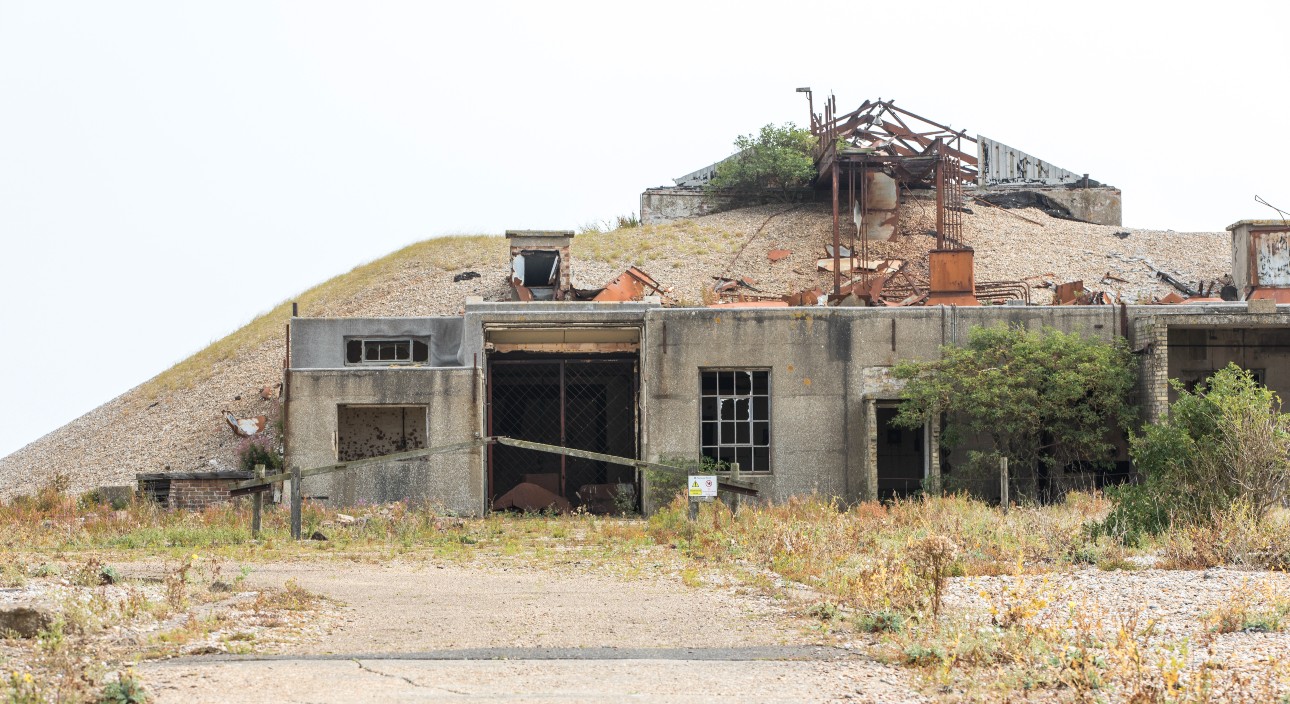
Laboratory 1 at Orford Ness National Nature Reserve, Suffolk
© National Trust Images/Annapurna Mellor
In many ways the National Trust itself is a memorial to conflict. Of roughly 250,000 hectares (617,763 acres) of land, just over 50,000 were donated directly as war memorials or gifted as National Land Memorial properties. Hardwick Hall, Sandham Memorial Chapel, Brownsea Island, Scafell Pike and Great Gable were bequeathed post-conflict and serve as memorials to sacrifices made during the 20th century.
National Trust Heritage Records Online
The National Trust Heritage Records is an online database providing a record of over 90,000 archaeological sites the National Trust looks after for the benefit of the nation. In 2021, nearly 2,250 newly discovered sites were added to the database, as archaeologists and teams of dedicated volunteers continue to research the history of our places.
